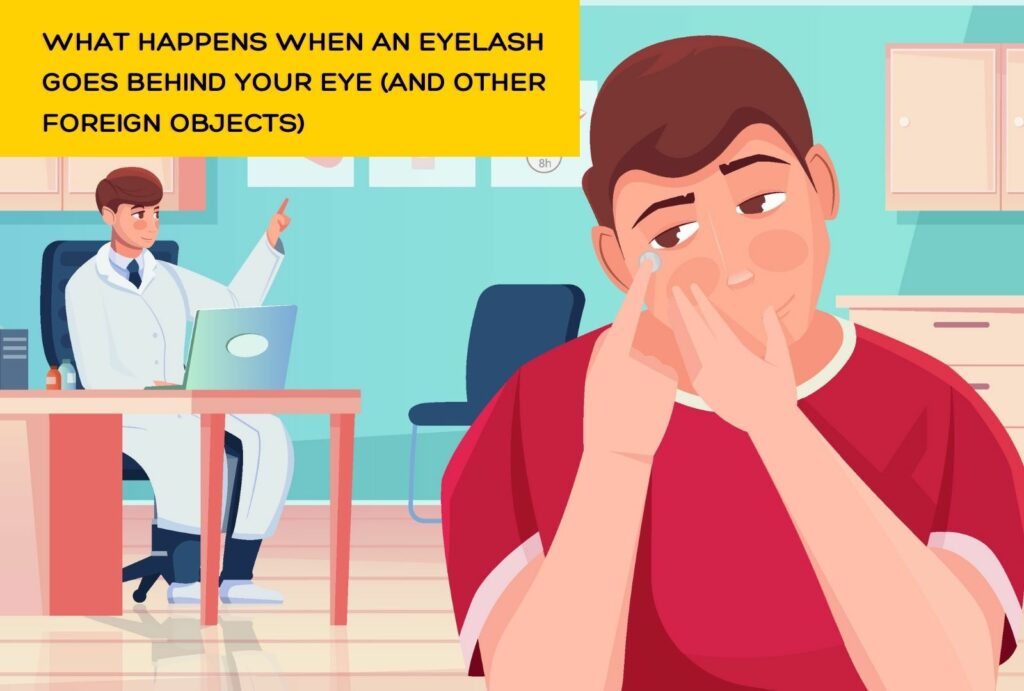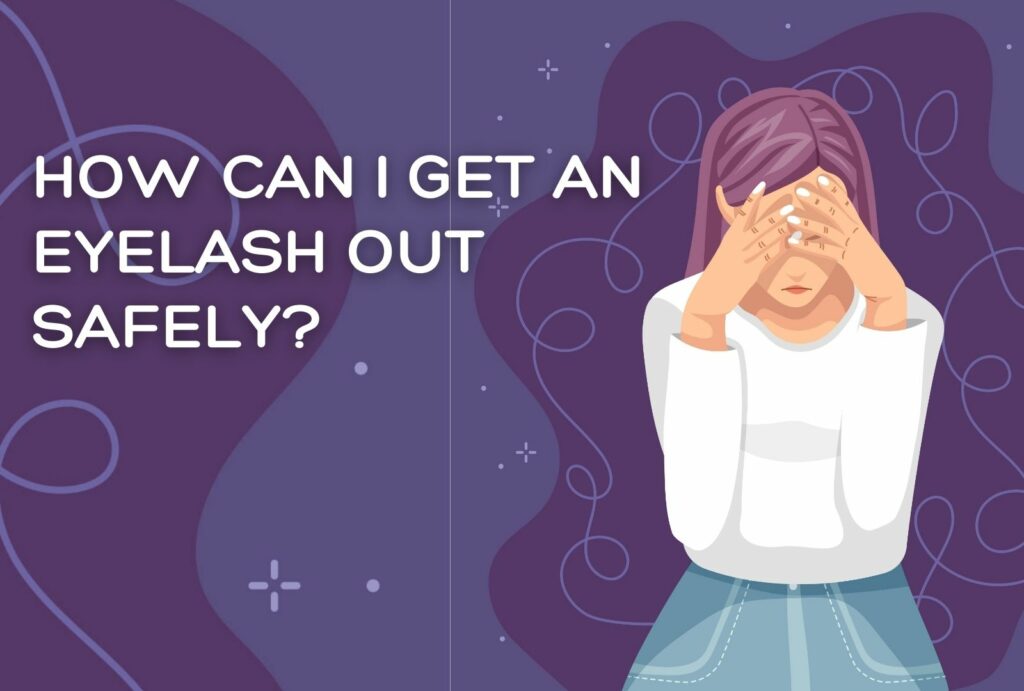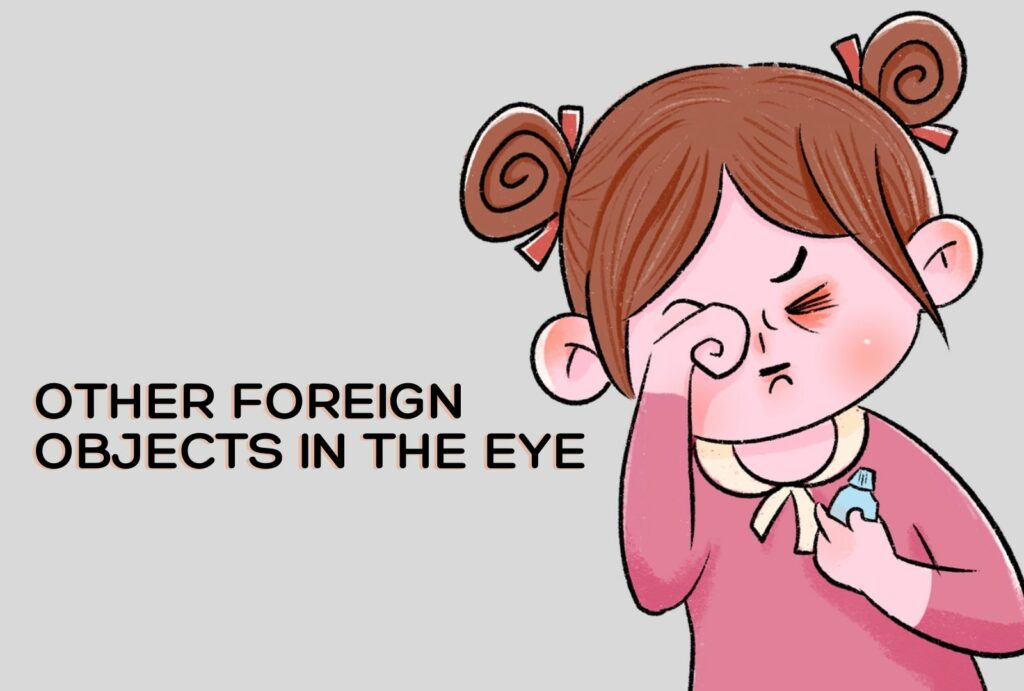
An eyelash behind the eye can cause a lot of discomfort and irritation. When a foreign object enters the eye, it triggers the blinking reflex, which tries to push the object out of the eye. In most cases, this is sufficient to remove the foreign object. However, when an eyelash gets lodged behind the eye, it can be difficult to remove and may require medical attention.
When an eyelash goes behind your eye, you may feel a sensation of something in your eye, along with redness, tearing, and discomfort. This can happen when an eyelash falls out of its natural position on the eyelid and gets trapped between the eyeball and the eyelid. If the eyelash is not removed, it can cause more irritation and even lead to an infection.
If you suspect that you have an eyelash behind your eye, you should not try to remove it yourself. Instead, seek medical attention from an eye doctor or an emergency room. They can use specialized tools to safely remove the eyelash without causing any damage to the eye.
Foreign objects other than eyelashes can also get stuck behind the eye. For example, small pieces of metal or wood can get lodged in the eye if they fly into the eye while using power tools or during outdoor activities. These foreign objects can cause significant damage to the eye if they are not removed promptly.
In some cases, a foreign object behind the eye may not cause any noticeable symptoms. However, it is important to seek medical attention if you suspect that you have something in your eye, even if you do not feel any discomfort or pain. This is because some foreign objects can cause serious damage to the eye over time, even if they are not causing immediate symptoms.
In conclusion, when an eyelash goes behind your eye, it can be a very uncomfortable experience. It is important to seek medical attention to have it safely removed to avoid further irritation and potential infection. Foreign objects other than eyelashes can also get stuck behind the eye and can cause significant damage if not removed promptly. It is always best to seek medical attention if you suspect that you have something in your eye.
Eye vs. eyelash
The eye and eyelash are two distinct components of the human visual system. While the eye plays a crucial role in our ability to see, the eyelash provides important protection for the eye. However, when an eyelash goes behind the eye, it can cause discomfort and irritation.
The eye is a complex organ that allows us to see the world around us. It is made up of several different parts, including the cornea, iris, pupil, lens, and retina. These parts work together to focus light onto the retina, where it is then converted into electrical signals that are sent to the brain for interpretation.
The eyelash, on the other hand, is a small hair that grows on the edge of the eyelid. It serves several important functions, including protecting the eye from dust, dirt, and other foreign objects. The eyelash also helps to keep the eye moist by preventing tears from evaporating too quickly.
However, when an eyelash goes behind the eye, it can cause a lot of discomfort and irritation. This can happen when an eyelash falls out of its natural position on the eyelid and gets trapped between the eyeball and the eyelid. If the eyelash is not removed, it can cause more irritation and even lead to an infection.
It is important to seek medical attention if you suspect that you have an eyelash behind your eye. Attempting to remove the eyelash yourself can cause damage to the eye and make the situation worse. An eye doctor or an emergency room can use specialized tools to safely remove the eyelash without causing any damage to the eye.
While the eye and eyelash may seem like small components of our visual system, they play important roles in our ability to see and protect our eyes. It is important to take care of both the eye and eyelash to maintain good eye health. This includes regular eye exams, proper hygiene, and seeking medical attention if you suspect that you have an eyelash behind your eye or any other eye-related issues.
In conclusion, while the eye and eyelash are different components of our visual system, they both play crucial roles in our ability to see and protect our eyes. When an eyelash goes behind the eye, it can cause discomfort and irritation and should be addressed by a medical professional. Taking care of both the eye and eyelash is essential for maintaining good eye health.
How can I get an eyelash out safely?

Getting an eyelash behind your eye can be an uncomfortable and irritating experience. If you suspect that you have an eyelash behind your eye, it is important to remove it safely and effectively to avoid further irritation or potential infection. Here are some tips on how to safely remove an eyelash from behind your eye.
- First, you should never rub or touch your eye if you have an eyelash behind it. This can cause further irritation and potentially push the eyelash deeper into your eye. Instead, try blinking rapidly to see if your natural blinking reflex can push the eyelash out of your eye.
- If blinking does not work, you can try using eye drops or artificial tears to flush out the eyelash. Tilt your head back and use a dropper or the tip of the eye drop bottle to place a few drops of the solution into your eye. The lubricating properties of the eye drops can help to dislodge the eyelash and flush it out of your eye.
- Another technique to remove an eyelash behind your eye is to use a damp cotton swab or a clean tissue. Gently place the swab or tissue on the edge of your eyelid and pull it down over your eye. This can help to dislodge the eyelash and bring it to the edge of your eye where you can safely remove it.
- If none of these techniques work or if you are experiencing significant discomfort or pain, it is important to seek medical attention from an eye doctor or an emergency room. They can use specialized tools to safely remove the eyelash without causing any damage to the eye.
In conclusion, getting an eyelash behind your eye can be a frustrating and uncomfortable experience. However, there are several safe and effective techniques you can use to remove the eyelash and avoid further irritation or potential infection. If you are unable to remove the eyelash on your own or are experiencing significant discomfort, it is important to seek medical attention from a professional. By taking these steps, you can safely remove the eyelash and protect the health of your eyes.
Things to look out for when trying to clean your eyes
Cleaning your eyes is an important part of maintaining good eye health. However, it is important to be aware of potential risks and things to look out for when trying to clean your eyes. Here are some things to keep in mind when cleaning your eyes to ensure that you do not accidentally get an eyelash behind your eye or cause other eye-related issues.
- First and foremost, you should always use clean hands when touching your eyes. Dirty hands can transfer bacteria and germs to your eyes, which can cause infections or other issues. Before touching your eyes or cleaning them, wash your hands thoroughly with soap and water.
- When cleaning your eyes, it is important to use the proper tools and techniques. Avoid using anything that is not specifically designed for use on the eyes, such as paper towels or tissues. Instead, use a clean, damp cloth or a specialized eye cleaning wipe.
- When wiping your eyes, be gentle and avoid rubbing too hard. Rubbing too hard can cause irritation or even damage to the delicate tissues around the eyes. Instead, use a light touch and gentle motions to clean the area around your eyes.
- Another important thing to keep in mind when cleaning your eyes is to avoid getting anything behind your eye, such as an eyelash. This can be difficult to do, as eyelashes can easily fall out of place and get caught between your eyeball and your eyelid. To avoid this, be careful when wiping your eyes and avoid rubbing too hard.
- If you do accidentally get an eyelash behind your eye or experience other eye-related issues while cleaning your eyes, it is important to seek medical attention. An eye doctor or an emergency room can safely remove the eyelash or address any other issues you may be experiencing.
In conclusion, cleaning your eyes is an important part of maintaining good eye health. However, it is important to be aware of potential risks and things to look out for when cleaning your eyes. By using clean hands, proper tools and techniques, and being careful not to get anything behind your eye, you can keep your eyes healthy and avoid any potential issues. If you do experience any problems while cleaning your eyes, seek medical attention right away to ensure the health of your eyes.
Other foreign objects in the eye

While an eyelash behind the eye is a common foreign object that can cause discomfort and irritation, there are several other foreign objects that can get into the eye and cause similar problems. Here are some of the most common foreign objects that can get into the eye and what to do if you experience any related symptoms.
Dirt and dust
Dirt and dust particles are common foreign objects that can get into the eye, especially if you work in a dusty or dirty environment. These particles can cause irritation, redness, and watering of the eyes. If you experience these symptoms, try flushing your eyes with water or using artificial tears to help flush out the particles. If the symptoms persist, seek medical attention.
Chemicals and irritants
Chemicals and irritants are another common foreign object that can cause discomfort and irritation in the eyes. If you get a chemical or irritant in your eye, it is important to flush your eyes immediately with water for at least 15 minutes. If you experience any pain, redness, or vision changes, seek medical attention right away.
Contact lenses
Contact lenses and other eye-related products can also be considered foreign objects if they are not properly fitted or maintained. If you wear contact lenses, it is important to follow proper care and maintenance instructions to avoid infection or other issues. If you experience any discomfort or changes in vision while wearing contact lenses, remove them immediately and seek medical attention if necessary.
Insects and other small animals
Insects and other small animals can also get into the eye and cause discomfort and irritation. If you experience these symptoms and suspect that an insect or other small animal may be the cause, seek medical attention right away. Do not attempt to remove the object on your own, as this can cause further damage or injury.
In conclusion, while an eyelash behind the eye is a common foreign object that can cause discomfort and irritation, there are several other foreign objects that can get into the eye and cause similar problems. If you experience any symptoms related to foreign objects in the eye, it is important to seek medical attention right away to avoid further damage or injury to the eye. By taking the proper precautions and seeking medical attention when necessary, you can keep your eyes healthy and free from foreign objects.
What if a contact lens goes behind your eye?
If you wear contact lenses, you may have heard stories of contact lenses getting lost behind the eye. While this is a rare occurrence, it is important to know what to do if it happens to you. Here is what you need to know about what to do if a contact lens goes behind your eye.
First of all, it is important to understand that contact lenses cannot actually get behind the eye. The eye is protected by a thin layer of tissue called the conjunctiva, which covers the front part of the eye and lines the inside of the eyelids. If a contact lens becomes dislodged from the cornea, it may become trapped under the upper eyelid, but it cannot go any further.
If you think that your contact lens may be stuck under your upper eyelid, try flushing your eye with artificial tears or saline solution to help dislodge the lens. You can also try gently massaging the upper eyelid to help the lens move back into place. If you are unable to dislodge the lens on your own, seek medical attention from an eye doctor.
In rare cases, a contact lens can become dislodged and move into the space between the eye and the eyelid. This can cause discomfort and irritation, but it is not an emergency. If you suspect that your contact lens has moved into this space, try looking down and pulling your lower eyelid away from your eye. This can help the lens move back into place. If you are unable to do this, seek medical attention from an eye doctor.
In conclusion, while it is rare for a contact lens to get behind the eye, it can become trapped under the upper eyelid or move into the space between the eye and the eyelid. If you suspect that your contact lens may be stuck, try flushing your eye with artificial tears or saline solution, or gently massaging the upper eyelid. If you are unable to dislodge the lens on your own, seek medical attention from an eye doctor. By knowing what to do if a contact lens becomes dislodged, you can avoid discomfort and potential eye-related issues.
FAQs
- Q: What should I do if an eyelash gets behind my eye?
A: If an eyelash gets behind your eye, try flushing your eye with water or using artificial tears to help dislodge the eyelash. If the eyelash does not come out or if you experience pain or vision changes, seek medical attention from an eye doctor.
- Q: How can I prevent foreign objects from getting into my eyes?
A: To prevent foreign objects from getting into your eyes, wear protective eyewear when working with tools or machinery, and avoid touching your eyes with dirty or contaminated hands. It is also important to properly maintain contact lenses and other eye-related products.
- Q: Can a foreign object in the eye cause permanent damage?
A: Depending on the severity of the foreign object and how quickly it is addressed, a foreign object in the eye can cause permanent damage. This is why it is important to seek medical attention if you experience any symptoms related to foreign objects in the eye.
- Q: What should I do if I get a chemical or irritant in my eye?
A: If you get a chemical or irritant in your eye, flush your eye immediately with water for at least 15 minutes. If you experience any pain, redness, or vision changes, seek medical attention right away.
- Q: Can I remove a foreign object from my eye on my own?
A: While it is possible to remove some foreign objects from the eye on your own, it is important to be cautious and seek medical attention if necessary. Attempting to remove a foreign object on your own can cause further damage or injury to the eye.
In conclusion, foreign objects in the eye, such as an eyelash behind the eye, can cause discomfort and potential damage if not addressed properly. To prevent foreign objects from getting into your eyes, wear protective eyewear and properly maintain contact lenses and other eye-related products. If you do experience any symptoms related to foreign objects in the eye, seek medical attention right away to avoid potential permanent damage.
To summarize
In summary, foreign objects in the eye, such as an eyelash behind the eye, can cause discomfort, irritation, and potential damage to the eye if not addressed properly. It is important to take preventative measures to avoid foreign objects from getting into your eyes, such as wearing protective eyewear and properly maintaining contact lenses.
If a foreign object does get into your eye, it is important to take action to remove it safely. While some objects can be removed on your own, it is important to seek medical attention if you experience any pain, vision changes, or if you are unable to remove the object.
When attempting to remove a foreign object from the eye, it is important to be gentle and avoid causing further damage or injury. If the object is on the surface of the eye, you can try using artificial tears or saline solution to flush it out. If the object is stuck under the eyelid, you can try flushing your eye with water or using gentle pressure to massage the eyelid.
If you are unable to remove the object on your own or if you experience any pain or vision changes, seek medical attention from an eye doctor. They can safely and effectively remove the foreign object and ensure that your eye is not at risk for any long-term damage or complications.
In conclusion, foreign objects in the eye, such as an eyelash behind the eye, can be uncomfortable and potentially damaging if not addressed properly. By taking preventative measures and knowing how to safely remove foreign objects, you can avoid potential complications and maintain good eye health. If you do experience any symptoms related to foreign objects in the eye, seek medical attention right away to ensure the best possible outcome.